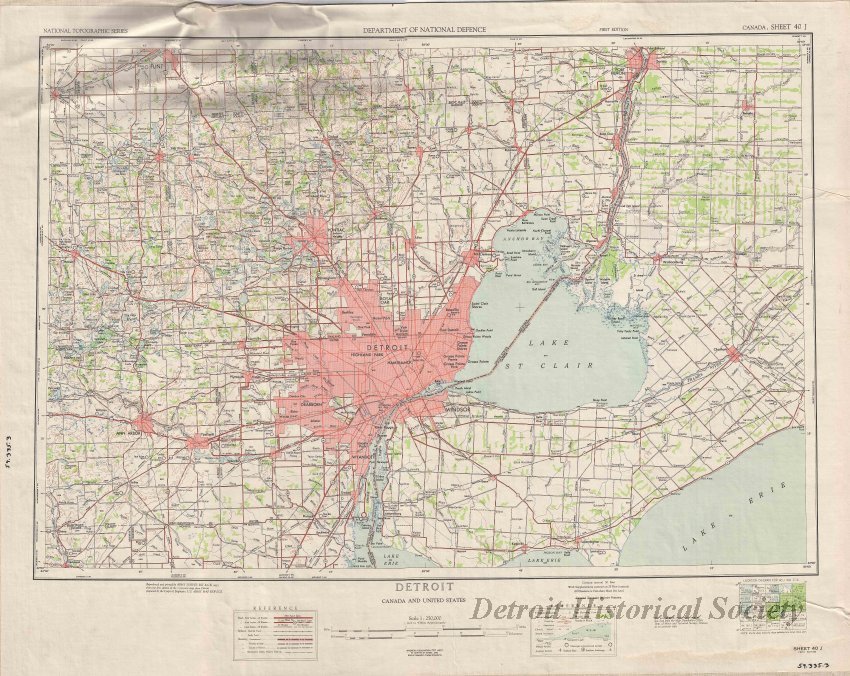Why Was Detroit Called the “Doorway to Freedom”
Detroit was an important stop along the Underground Railroad — an informal network of safe houses and people willing to help runaway slaves escape to freedom — and the final stop before escaped slaves reached freedom in Canada.
Detroit has many cultural and religious organizations and countless historic markers that have been dedicated over the years to commemorate the “Doorway to Freedom,” but the people that made up this stop along a long, harsh journey are what helped Detroit earn a reputation as the “Doorway to Freedom.”
Detroit looked quite different at this time, it was not the suburban region we recognize today and had very fluid borders as a frontier town – making it much easier for passengers and conductors to stay hidden.

Photo: c. 1953, from the Detorit Historical Society collection. One topographic map entitled "Detroit, Canada and United States."
Detroit’s unique geographical location coupled with its Black community and abolitionist sympathizers made the city a prime crossing location for Freedom Seekers, a term used to identify slaves escaping from the South.
Detroit was code named “Midnight” by Underground Railroad conductors who were essential to the operation.
Opening the Doorway
Portions of the population – including the free Black citizens – supported the Abolition movement and worked actively to maintain the Underground Railroad. Many people are taught that White abolitionists organized this extensive system to spirit slaves to the North, but the Underground Railroad was an informal operation dependent on Black conductors, workers, wagon drivers, maids in addition to the white farmers, abolitionist, and political activist typically learned about in schools.
In Detroit, most of the day-to-day operations of the network were managed by local Black businessmen and churches and in the South and manyconductors were Black, both enslaved and free.
Photo: Detroit Historical Museum's Doorway to Freedom exhibit.
And while some conductorsalong Underground Railroad remained secret during its time,many of the conductors involved in the Underground Railroad were very public about their opposition to slavery, and openly involved in other abolitionist organizations.
Through the Doorway
Once Freedom Seekers made it through the Doorway to Freedom and into Canada, support for them continued. They were often granted land, money, and education to help them. They often obtained lower-level jobs, with the help of some training.
Freedom Seekers, like former Maryland slave Josiah Henson established settlements like the Dawn Settlement to provide refuge for freed slaves. Dawn Settlement assisted newly arrived ex-slaves to buy land and find comfort in a welcoming community of like-minded individuals and families. Henson’s initiative also helped found the British American Institute, one of Canada's first industrial schools.
Visit the Museum
It was Detroit’s rebellious and pragmatic spirit that made the city a pivotal player in national discussions regarding fugitive slaves. From private citizens to city officials, Detroiters — Black and White — worked together under high risks and often in violation of Federal law to coordinate the escape of hundreds of Freedom Seekers.
You can learn more about Detroit’s impact on the Underground Railroad and the Civil Rights Movement by visiting the Detroit Historical Musuem. Plan your visit at detroithistorical.org.
